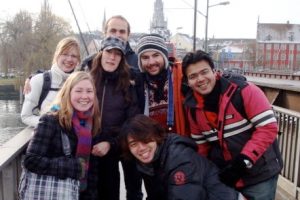According to the UN, the family is
“One of the fundamental pillars of society”.
…But we all know that today there is no longer only one or two types of families, as there was not more than 2 or 3 decades ago: nuclear and single-parent families, today there are homoparental families, echo families, etc… ….
Despite the growth in family types due to social evolution, there are cultural traditions and the history of each nation that influence the shape and essence of our families.
Large families, for example, are deeply rooted and related to religious issues, only children, as has been the case in China for years, are types of families with specific and common characteristics from their core that mark the character of the children, future members of other families, to whom they will transmit their customs:
But how are families and their relationships
- First relationships: parents and childrenWith each generational change this distance narrows, which is why it seems to be more difficult to educate! The trust and closeness we have now with our children is not the same we had with our parents, nor the one they had with their parents.
- Second relationships: grandparents: it is in this generation when the role of grandparents has become so important and essential in some cases and even more so since the crisis, where the help of grandparents has been fundamental. It is also a very positive relationship for both the grandchildren and the grandparents, as both nurture each other with love, time, understanding and help.
- Third-party relationships: cousins and uncles: much closer relationships in Mediterranean countries where the nucleus of the family is extended and members are added to the family. In countries like the U.S., for example, tradition dictates that children leave the nest when they finish school and go off to college, often in another state.
In Psicologia y Mente they talk about
The 8 types of families and their characteristics
indicating the importance of the family in the emotional well-being of its members has been of scientific interest during the last decades.
Monografias.com tells us about another point of view of the family, besides emphasizing an institution of values, norms, customs, etc. He talks about Ways of being a family: rigid, permissive, child-centered, etc… an interesting and curious approach since these models also transmit their values and customs to a changing society.
In the end, it is precisely plurality that enriches the term family.
There is no single model. Just as there is multiculturalism, there is a multiplicity of family models. And what unites them is that point in common that we find in their values such as unconditionality, coexistence, sharing, respect, living in community, generosity… Values that we internalize and are part of our being, above any other that may bring us another core.
We leave you this video of the importance of the family in today’s world via MARTIM D on Youtube
Importance of Family in Todays World (Mashup)
Happy International Day of Families to all of you!




